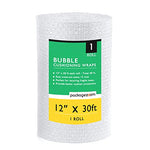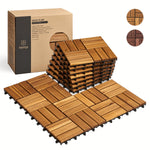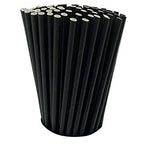You have no items in your shopping cart.
Are you an aspiring gardener or an experienced horticulturist looking to take your cultivation to the next level? One crucial element that can significantly impact the success of your greenhouse is its roof. The greenhouse roof plays a vital role in maintaining an optimal environment for your plants to thrive. In this comprehensive guide, we will delve into the importance of a well-designed greenhouse roof and explore various efficient and sustainable solutions to elevate your cultivation practices.
Greenhouse Roof: An Integral Component for Optimal Cultivation
The Significance of Greenhouse Roof
A greenhouse roof serves as the primary protective barrier between your plants and the external environment. Its design, materials, and functionality can have a profound impact on the overall efficiency and success of your greenhouse. A well-designed roof offers benefits such as:
-
Temperature Regulation: An efficient greenhouse roof helps maintain an optimal temperature range by trapping heat and minimizing heat loss, creating a stable environment for plants.
-
Light Transmission: A properly designed roof allows adequate natural light to penetrate, promoting photosynthesis and healthy plant growth.
-
Protection from External Factors: The greenhouse roof shields plants from adverse weather conditions, pests, and excessive UV radiation, ensuring a safe and controlled environment.
Types of Greenhouse Roofs
When it comes to greenhouse roofs, various options are available, each with its own advantages and considerations. Let's explore the most common types:
1. Glass Roofs
Glass roofs are a classic choice for greenhouses, providing excellent light transmission and an aesthetically pleasing appearance. Glass offers durability, UV protection, and exceptional visibility. However, it can be expensive and requires additional structural support due to its weight.
2. Polycarbonate Roofs
Polycarbonate roofs are gaining popularity due to their high light transmission, durability, and thermal insulation properties. They are lightweight, easy to install, and cost-effective compared to glass. Polycarbonate roofs also offer excellent UV protection, preventing damage to plants.
3. Polyethylene Film Roofs
Polyethylene film roofs are a budget-friendly option commonly used in small-scale greenhouses. They provide good light transmission, but their durability is lower compared to glass or polycarbonate. Regular replacement is necessary to maintain optimal light transmission and prevent wear and tear.
4. Fiberglass Roofs
Fiberglass roofs are lightweight, durable, and offer good light transmission. They are an affordable alternative to glass and can withstand harsh weather conditions. However, over time, fiberglass may become discolored and reduce light transmission.
Factors to Consider When Choosing a Greenhouse Roof
Selecting the right greenhouse roof involves considering various factors to ensure optimal cultivation conditions. Let's explore the key aspects you should evaluate before making a decision:
1. Climate Considerations
Understanding your local climate is crucial for choosing the appropriate greenhouse roof. Consider factors such as temperature fluctuations, sunlight exposure, wind speed, and precipitation levels. Different roof materials offer varying degrees of insulation and UV protection, making them suitable for specific climates.
2. Light Transmission
Proper light transmission is essential for photosynthesis and healthy plant growth. Different materials offer varying light transmission levels. Assess your crop's light requirements and choose a roof material that provides the optimal balance of natural light and UV protection.
3. Structural Integrity
The structural integrity of your greenhouse roof is vital for long-term durability. Ensure that the roof material can withstand your local weather conditions, including wind, snow load, and hail. Additionally, consider the roof's weight and its impact on the overall greenhouse structure.
4. Energy Efficiency
Optimizing energy efficiency is crucial for sustainable greenhouse practices. Look for roof materials with excellent insulation properties to minimize heat loss during colder months and reduce energy consumption. Consider the overall energy efficiency of your greenhouse design, including ventilation systems and shading options.
5. Longevity and Maintenance
Evaluate the longevity and maintenance requirements of different roof materials. Glass and polycarbonate roofs are generally more durable and require less frequent replacement compared to polyethylene film or fiberglass roofs. Consider the cost and effort involved in maintaining each roof type.
FAQs About Greenhouse Roofs
1. Are glass roofs better than polycarbonate roofs for a greenhouse?
Both glass and polycarbonate roofs offer advantages depending on your specific needs. Glass provides superior visibility and longevity but can be heavier and more expensive. Polycarbonate roofs offer excellent light transmission, thermal insulation, and durability at a more affordable cost.
2. Can I use polyethylene film for a large-scale greenhouse?
Polyethylene film is commonly used for small-scale or temporary greenhouses due to its affordability. For larger structures, consider more durable materials like glass or polycarbonate for better longevity and structural integrity.
3. How can I maintain a glass roof for optimal light transmission?
Regular cleaning and removal of dirt, dust, and debris are essential to maintain optimal light transmission through a glass roof. Additionally, inspect for any cracks or damage and promptly address them to prevent further issues.
4. Do greenhouse roofs require regular maintenance?
Yes, greenhouse roofs, regardless of the material, require regular maintenance. Cleaning, inspection for damage, and replacing worn-out components are essential to ensure the roof's longevity and optimal performance.
5. Can I install a greenhouse roof myself, or should I hire professionals?
The complexity of greenhouse roof installation depends on the material and the size of your greenhouse. While some materials like polyethylene film are relatively simple to install, others like glass or polycarbonate may require professional expertise to ensure proper installation and structural integrity.
6. Are there any government grants or incentives available for implementing energy-efficient greenhouse roofs?
It's worth exploring government grants, subsidies, or incentive programs that promote energy-efficient practices in agriculture. Check with local agricultural agencies or research initiatives that support sustainable greenhouse technologies.
Conclusion
A well-designed greenhouse roof is a crucial element in creating an optimal cultivation environment. Consider the climate, light transmission, structural integrity, energy efficiency, and maintenance requirements when selecting the right roof for your greenhouse. Whether you choose glass, polycarbonate, polyethylene film, or fiberglass, prioritize sustainability and efficiency to enhance your cultivation practices. With the right roof, you'll provide your plants with a safe, controlled, and thriving environment.








